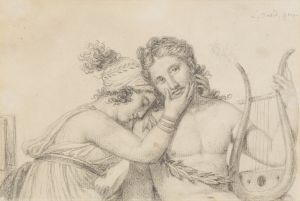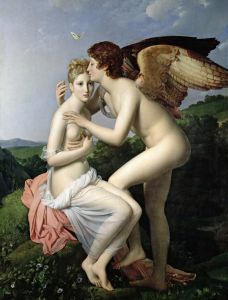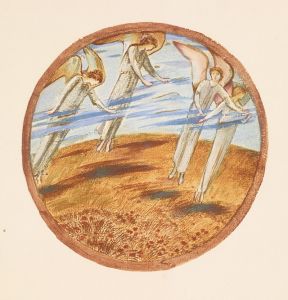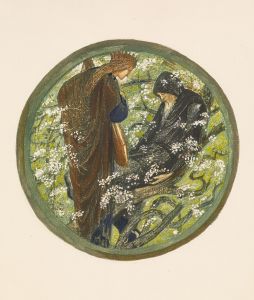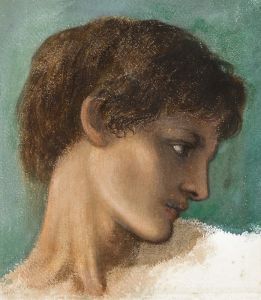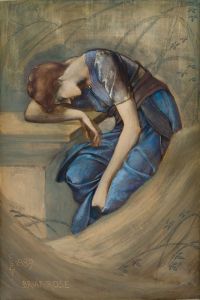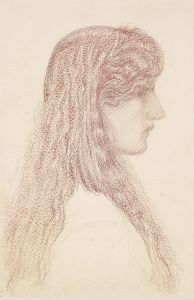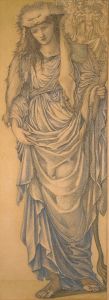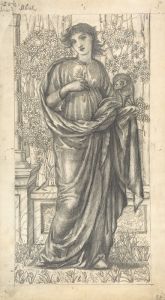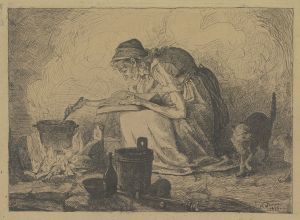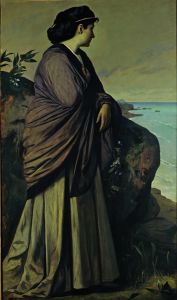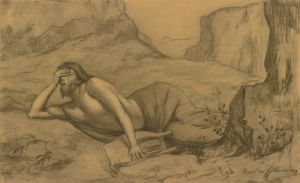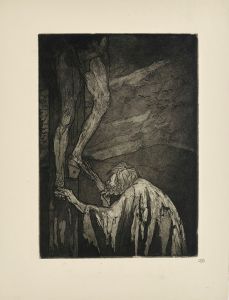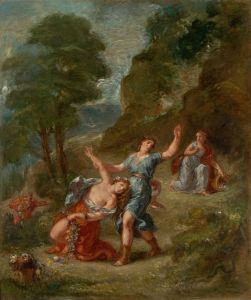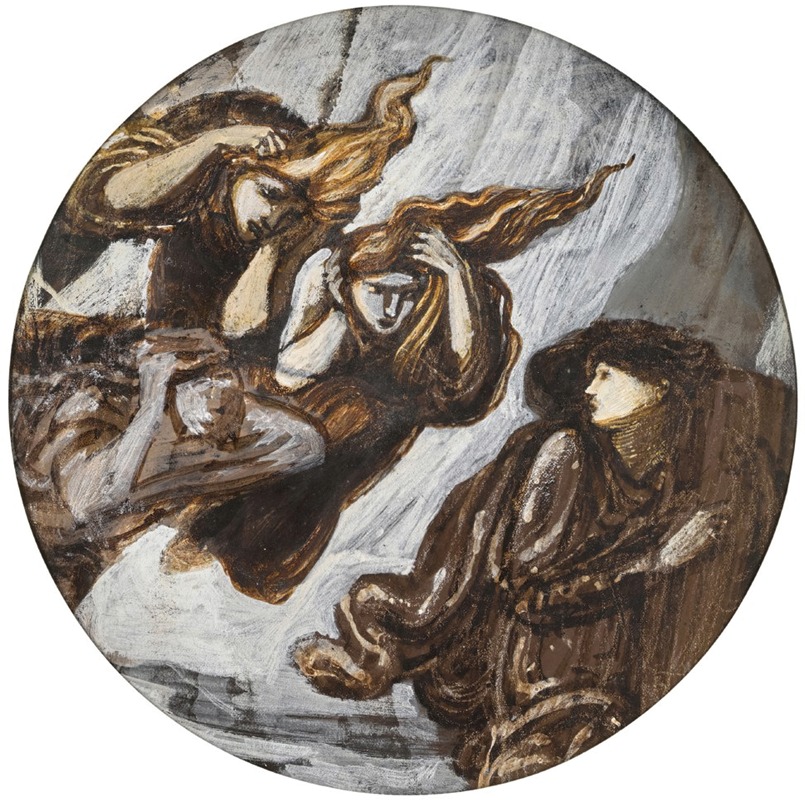
Orpheus Pursued by Furies
A hand-painted replica of Sir Edward Coley Burne-Jones’s masterpiece Orpheus Pursued by Furies, meticulously crafted by professional artists to capture the true essence of the original. Each piece is created with museum-quality canvas and rare mineral pigments, carefully painted by experienced artists with delicate brushstrokes and rich, layered colors to perfectly recreate the texture of the original artwork. Unlike machine-printed reproductions, this hand-painted version brings the painting to life, infused with the artist’s emotions and skill in every stroke. Whether for personal collection or home decoration, it instantly elevates the artistic atmosphere of any space.
"Orpheus Pursued by Furies" is a painting by the British artist Sir Edward Coley Burne-Jones, a prominent figure associated with the Pre-Raphaelite Brotherhood and the later Aesthetic Movement. Burne-Jones, known for his romantic and mythological themes, created this artwork in the late 19th century, a period when he was deeply engaged in exploring classical mythology and medieval subjects.
The painting depicts the mythological figure Orpheus, a legendary musician, poet, and prophet in ancient Greek religion and myth. Orpheus is best known for his ability to charm all living things and even stones with his music. The narrative of Orpheus is most famously recounted in the story of his descent into the Underworld to retrieve his wife, Eurydice, who had died from a snake bite. Despite his enchanting music, which softened the hearts of Hades and Persephone, Orpheus ultimately failed to bring Eurydice back to the living world due to a condition that he not look back at her until they reached the surface.
In "Orpheus Pursued by Furies," Burne-Jones captures the dramatic moment when Orpheus is pursued by the Furies, ancient deities of vengeance. The Furies, also known as the Erinyes, were believed to be the personifications of vengeance and retribution, often depicted as terrifying figures who pursued wrongdoers. In the context of Orpheus's myth, the Furies symbolize the relentless forces of fate and punishment.
Burne-Jones's depiction is characterized by his signature style, which includes elongated figures, intricate details, and a dreamlike quality. His use of color and form creates a sense of otherworldliness, enhancing the mythological theme. The painting reflects Burne-Jones's interest in the intersection of beauty and melancholy, a common motif in his work.
The artist's fascination with mythological subjects was influenced by his close association with other members of the Pre-Raphaelite Brotherhood, such as Dante Gabriel Rossetti and William Morris. Burne-Jones's work often drew on literary sources, including classical mythology, medieval romances, and contemporary poetry, which he translated into visual narratives that resonated with the Victorian fascination with the past and the ideal.
"Orpheus Pursued by Furies" exemplifies Burne-Jones's ability to convey complex emotional and narrative content through his art. The painting's composition and the expression of the figures reflect the tension and drama inherent in the myth of Orpheus. This work, like many of Burne-Jones's pieces, invites viewers to contemplate themes of love, loss, and the inexorable nature of fate.
The painting is part of a broader body of work by Burne-Jones that explores similar themes and showcases his distinctive artistic vision. His contributions to the Pre-Raphaelite and Aesthetic movements have left a lasting impact on the art world, influencing subsequent generations of artists and continuing to captivate audiences with their beauty and depth.
While specific details about the provenance or current location of "Orpheus Pursued by Furies" may not be widely documented, Burne-Jones's legacy as a master of mythological and romantic art remains well-established. His works are celebrated for their technical skill, imaginative scope, and the ability to evoke timeless stories through the medium of painting.





